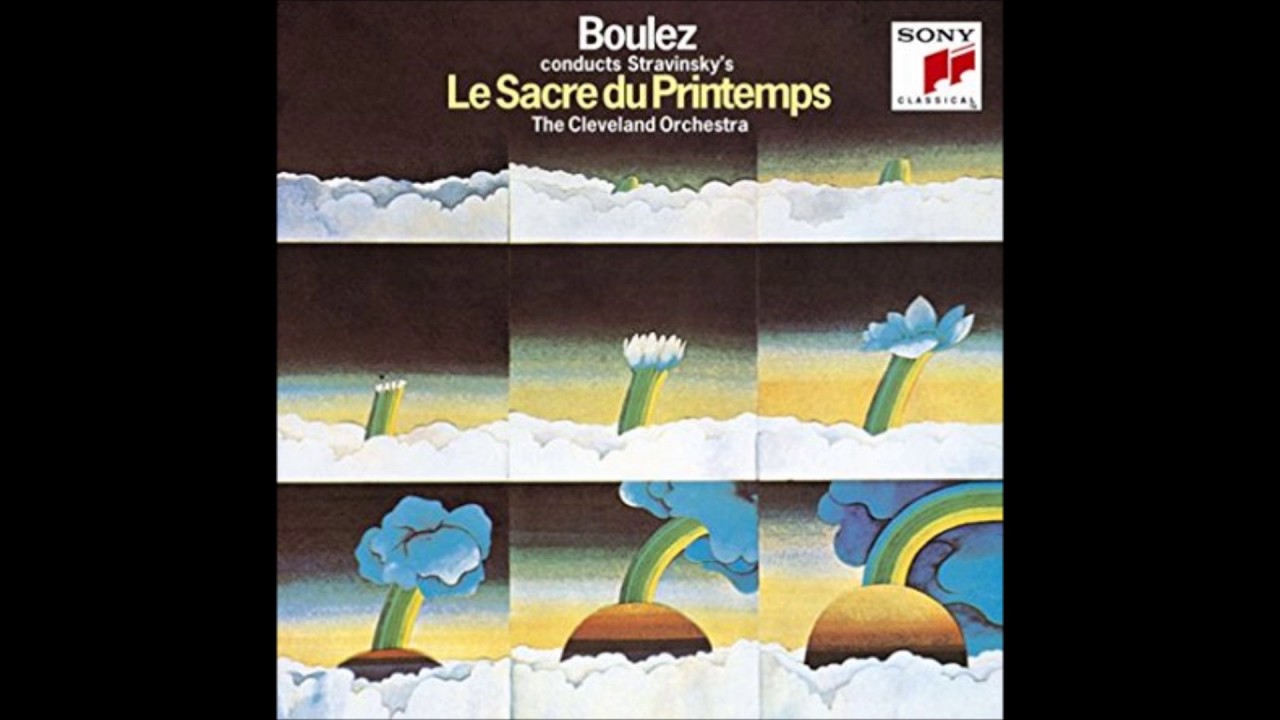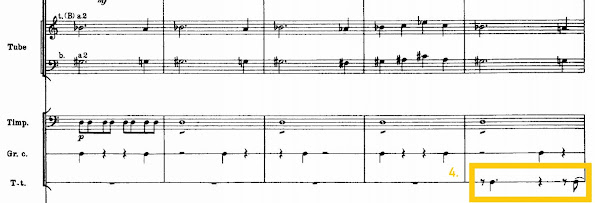I mean to look at five different very small-scale details, and demonstrate the hard-to-beat Pierre Boulez’s 1969 recording with the Cleveland Orchestra:
:
Obviously, recording techniques have evolved a lot since then — and there are many other great recordings; here’s just a few:
Monteux/Grand Orchestre Symphonique (1929). He conducted the premiere and was one of the first to record it.
Bernstein/NY (1958). A really excellent and thoughtful interp. The Phil was at its best here …
Orozco-Estrada/Frankfurt Radio (2015). Love this guy and this band.
Gemma New/Dallas (2023). I highly recommend this version, especially for the video work, which marries the audio perfectly …
Bernstein/NY (1958). A really excellent and thoughtful interp. The Phil was at its best here …
Orozco-Estrada/Frankfurt Radio (2015). Love this guy and this band.
Gemma New/Dallas (2023). I highly recommend this version, especially for the video work, which marries the audio perfectly …
I.
Stravinsky’s subtitle is so descriptive: Fertility of the Earth.
This four-bar nibble occurs just a few moments into the piece. For the purpose of this example, I want to draw your attention to the two bass clarinets.
There are two other things going on — a fluttering alto flute and the insistent English horn.
II.
Stravinsky has a nice steady pulse going on — the piccolo plays a familiar melody, while the contrabassoons and the fourth French horn (in its lowest register!) plays 1/4 notes on the offbeats in major sevenths. In some recordings, this lovely off-beat rhythm is barely heard … or worse.
III.
Stravinsky is building up to this massive climax which culminates in a bar of silence before the Dance of the Earth. This little detail has always fascinated me … and is not as well-defined by other recordings as in this one.
There are four main things going on. We’re concerning ourselves only with #3-4!
- The melody is a clever five-bar phrase, where bar 3 is repeated;
- These are the tenor and bass “Wagner” tubas (they produce a sound similar to a baritone horn). Long notes, also composed as a five-note phrase;
- The entrance of the bass drum. Notice that it’s in 3/4 (the 1/8th-notes in the timpani help define the beat) — producing that wonderful two-against-three effect … but it gets even better!
- The tam-tam plays one beat between two bass drum beats, creating yet another polyrhythm! All this is clear as a bell in this magical Cleveland recording!
IV.
Stravinsky lengthens the duet for a bar or two, and then drops in this beautiful counter-riff:

Two violas and two cellos play this spooky little jagged triplet, while the rest of the cellos keep a steady 1/8th-note pulse.
The trumpets repeat their somber theme one more time, and Stravinsky sweeps everything up with his great, magical orchestration. Like a floating ghost, the trumpet theme is taken up by a new combination — clarinets and horn. The only pulse is the pizzicato cello, as the texture thickens with the triplet motif.
V.
A glissando by the English horn ends on a held G-Sharp against the steady plucked D‘s (a tritone apart). An alto flute joins in.
After much working out, Stravinsky returns to this idea, which will lead directly into the ferocious Sacrificial Dance. But note a small detail of orchestration. The glissando is played by a muted bass trumpet

which must carefully lead into the English horn note, which it does three more times. The alto flute again answers the E.H.
Once again, Stravinsky challenges the two bass clarinet players:
Go to Source
Author: Lewis Saul












